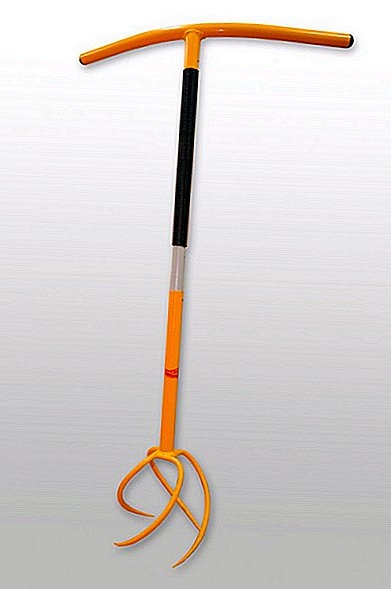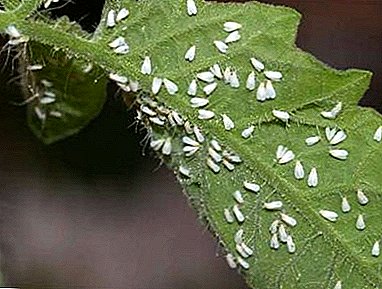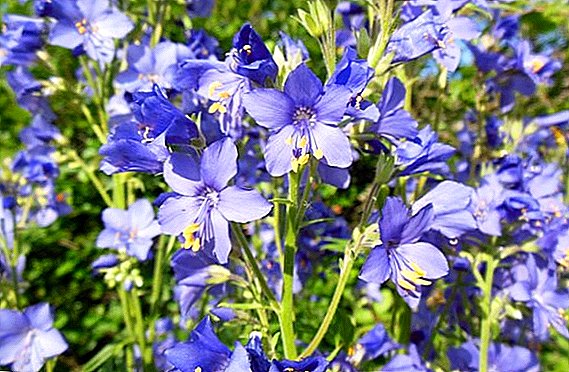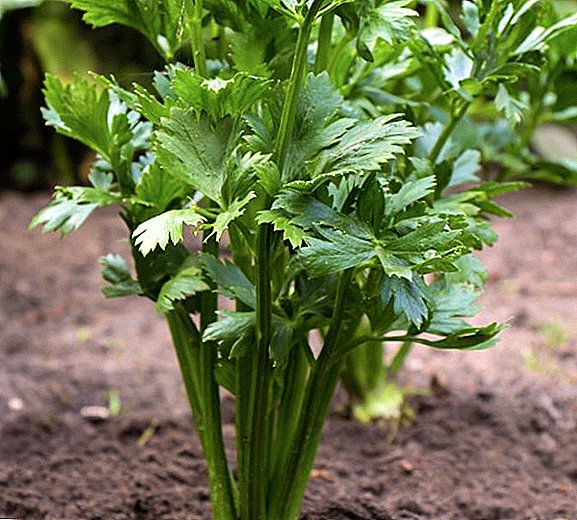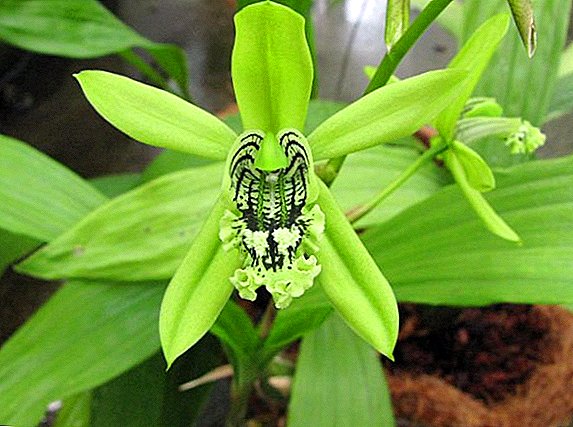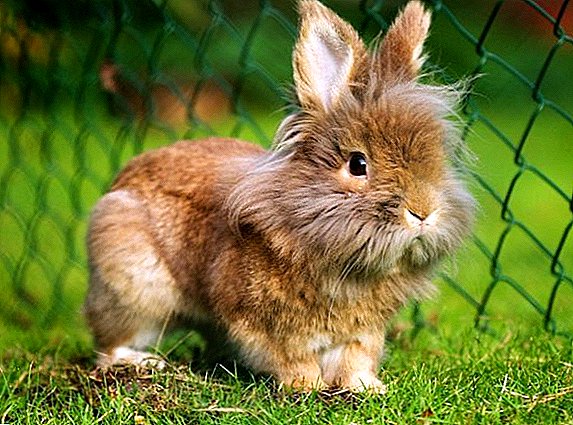 In the past 50 years, decorative rabbits have gained popularity as pets on a par with cats. These are cute, smart furry animals that can be quickly trained and trained. One of the most popular decorative rabbit breeds is a lionheaded rabbit, neat and very beautiful animal.
In the past 50 years, decorative rabbits have gained popularity as pets on a par with cats. These are cute, smart furry animals that can be quickly trained and trained. One of the most popular decorative rabbit breeds is a lionheaded rabbit, neat and very beautiful animal.
History of origin
Belgian breeders through long breeding work have made this decorative breed appear. Initially, the goal was to create a tiny rabbit with a fur coat with a beautiful long nap, so the crossing was carried out between the decorative breeds of shaggy Dutch dwarf and Swiss foxes. As a result of gene mixing and subsequent fixation of mutations, the resulting offspring have long hair in the form of a "lion collar" located on the neck and partially on the head of the animals.  Soon the newly created rabbit breed gained recognition in the English community of rabbit breeders, then it was recognized in America. So a new breed gradually began to spread throughout the world. Since 2002, the lionhead was officially recognized as a new dwarf breed of rabbits, after which animals began to be allowed to participate in exhibitions. The Breeders' Association of America approved breed standards in 2004.
Soon the newly created rabbit breed gained recognition in the English community of rabbit breeders, then it was recognized in America. So a new breed gradually began to spread throughout the world. Since 2002, the lionhead was officially recognized as a new dwarf breed of rabbits, after which animals began to be allowed to participate in exhibitions. The Breeders' Association of America approved breed standards in 2004.
Did you know? In the middle of the 20th century, the Friedmann test was carried out for the early diagnosis of pregnancy. For some reason, it was a misconception that the animal being tested for pregnancy will die if the result is positive. This led to the phrase "dead rabbit" in America for many years becoming a euphemism for a positive pregnancy test.
Breed description
Like any other breed, lion-headed rabbits have their own standards. A strong deviation from them serves as a basis for culling individual individuals.
Appearance
Exterior thoroughbred representative of this dwarf breed:
- proportionally folded body;
- lack of propensity to obesity;
- the weight of an adult dwarf rabbit reaches 1 kg 700 g;
- the body weight of a six-month-old baby varies from 1 kg to 200 g to 1 kg to 400 g;
- the round head is surrounded by a collar of long wool that reaches the chest (wool length - 50 mm);
- not very long (up to 5 cm) rounded ears are set straight, they have an edge on the outside;
- eyes wide apart;
- eye color can be blue, black or red.
 The standard of the breed indicates more than sixty types of color, they also include the color combinations of the main colors, which include:
The standard of the breed indicates more than sixty types of color, they also include the color combinations of the main colors, which include:- agouti;
- Marder;
- the black;
- white;
- faun;
- Orange;
- siam;
- Turengen.
Important! The beauty and pride of the animals of this dwarf breed - the "lion's mane" requires daily combing, so the owner must pay attention to the fluffy pet every day.
Character traits
Lionhead rabbits are very nervous and fearful creatures with extremely low resistance to stress. Animals love peace and quiet, they are frightened by harsh sounds, they are afraid of noisy little children, dogs and cats. A rabbit who survived a serious fright can get sick.
How to choose a lionheaded rabbit
After making a decision on choosing a fluffy pet, it is advisable to familiarize yourself with the breed standards before buying.
The animal should have a smooth transition between short hair and a long lion collar. The length of the collar on the neck of the neck should be at least 50 mm.  It is necessary to pay attention to the shape of the body and head: in a healthy rabbit they will not be long or narrow. The muzzle should be stupidly rounded, the pile on the ears should not be long.
It is necessary to pay attention to the shape of the body and head: in a healthy rabbit they will not be long or narrow. The muzzle should be stupidly rounded, the pile on the ears should not be long.
A sign of health is thick dense wool, lack of bald spots on the skin. You should also examine the ears and nose of the animal for sores or damage.
Did you know? By the 50s of the last century, rabbits became one of the most serious pest-mammals in Australia. It was estimated that the damage they had caused by this time was more than 50 million pounds per year. In 1950, the Myxoma virus that causes myxomatosis was deliberately spread among the rabbit population, which led to a sharp decrease in the number of these animals.
Cage conditions
With proper care, rabbits of a lion-headed breed live for about eight years. According to the statements of veterinarians, a neutered or sterilized animal lives longer and has minimized the possibility of oncology of the reproductive system. In non-sterile rabbits, when they reach the age of two years, the risk of developing cancer in this area increases. 
Cage requirements:
- It is advisable to purchase a house for the rabbit in the form of an open, spacious cage. A small animal should have space for walking within the cage.
- For a rabbit house such dimensions are recommended: length - 100 cm, width - 80 cm, height - 70 cm.
- Two feeders are installed in the cage. The first is in the form of a lattice deep tank for dry and fresh grass, the second is in the form of a wide and shallow tray for bulk foods and vegetables.
- Also in the rabbit cage should be drinking water with drinking water and a small indoor indoor space for sleeping and relaxing (wooden house).
- It is desirable to provide for the presence in the cage of a removable bottom or lower pallet, this will facilitate the cleaning of the rabbit housing.
- It is best to install a rabbit cage on the floor in the common room, where the whole family often gathers. An animal can periodically be let out to walk around the house, to get acquainted with the situation and its inhabitants. You do not need to disturb the animal often on its territory, it should feel protected in its “hole”.
Check out the breeds of ornamental rabbits.
Several times a week the bedding in the cage changes. Periodically, the animal can be bathed in warm water using special zoological shampoos purchased at a veterinary pharmacy. Often you can not bathe the animal, enough 2 - 4 procedures per year. Provided that the cage will be cleaned on time and the litter is changed, the long-eared wool will always be clean.  Lionhead rabbits fall ill if there are drafts in the room. They also don’t like it when direct sunlight hits the house, or the air in the room is too dry. The problem with dry air in the winter time is solved simply - the owners need only once a day to humidify the air with a spray gun and water. +23 ° C is the optimum temperature for keeping these ornamental animals, but it is not necessary to strictly adhere to this temperature schedule, the pets calmly withstand the temperature fluctuations in one direction or the other by 5-6 degrees.
Lionhead rabbits fall ill if there are drafts in the room. They also don’t like it when direct sunlight hits the house, or the air in the room is too dry. The problem with dry air in the winter time is solved simply - the owners need only once a day to humidify the air with a spray gun and water. +23 ° C is the optimum temperature for keeping these ornamental animals, but it is not necessary to strictly adhere to this temperature schedule, the pets calmly withstand the temperature fluctuations in one direction or the other by 5-6 degrees.
Important! When bathing a decorative long-haired rabbit is recommended to pay special attention to the fact that the water does not fall into the animal's nose and ears. The most convenient way is to swim in a small amount of water at the bottom of the bath - this is safe for the animal, and the walls of the bath will serve as a barrier that prevents the rabbit from escaping from water procedures.
Care rules
These animals are very clean and quick-witted, quickly learn to use the tray, which makes it easy for them to breed in the home. After delivering the rabbit after buying it home, it is placed in a cage and does not disturb for some time, allowing you to get used to the new environment. Also in the first week it is advisable not to take the newcomer into your arms, because moving from place to place is a huge stress for the animal. Rabbits are fearful and afraid of strangers and loud, harsh sounds.  It is easy to accustom a decorative animal to a bowel movement in a tray, but in new conditions it may be confused for some time. Tray with a filler set in a rabbit cage. The first time the owner will have to watch the ward and stop attempts to defecate in the corners. It is advisable to manually move the rabbit who has tuned in to the toilet visit and put it in the tray, after several times the animal will get used to visiting the toilet tray on its own.
It is easy to accustom a decorative animal to a bowel movement in a tray, but in new conditions it may be confused for some time. Tray with a filler set in a rabbit cage. The first time the owner will have to watch the ward and stop attempts to defecate in the corners. It is advisable to manually move the rabbit who has tuned in to the toilet visit and put it in the tray, after several times the animal will get used to visiting the toilet tray on its own.
Learn how to keep decorative rabbits.
For coat
All representatives of this species of animals from nature have the instinct to keep their wool clean, so they regularly brush and lick their fur coats. As a result of hygienic procedures for the care of the coat of wool, the rabbit "eats" fluff and wool. As a result, the animal begins to choke, it has constipation, it swells up and the stomach starts to hurt. Sometimes due to neglect of the owners, who did not come to the aid of their pet in time, the pet perishes. The suffering animal becomes depressed, eats poorly, and often breathes hard, in this case, urgent veterinary care is necessary.
The owners need every day with a massage comb gently and carefully, in order not to damage the delicate skin of the baby, tidy up the fur coat of the decorative rabbit, and cover the bottom of the rabbit dwelling with litter of large sawdust.
Did you know? The domestication of rabbits began in the Middle Ages, when they began to be kept in cages at monasteries. The monks bred animals for food, since the newborn rabbits were not considered meat, and they were allowed to be eaten during Lent.
Behind the teeth
Rabbit teeth grow throughout life, their growth never stops. Eating hard feed (beets, carrots) only partially solves the problem. So that the animal can regularly grind down the length of the teeth, a rather large pebble is installed in the cage. 
What to feed a rabbit
Whether long-eared will be healthy depends on proper nutrition, therefore in his diet should be such products:
- Dry grass (hay), if possible from legumes. In one kilogram of fresh-cut greens of legumes (soybeans, beans, peas, chickpeas) there are 25 grams of protein, well digestible by rabbits. On this forage the young growth well grows, and the pet's hair shines and shines. Also suitable for drying: dandelion leaves, prickly sow thistle, young nettle.
- Succulent feed - fodder or table beets and carrots, turnips, cabbage, zucchini and squash. Eating juicy solid foods, animals grind their teeth, while at the same time getting vegetables from protein, water, minerals and vitamins.
- Cereals - grain of wheat and barley, corn on the cob and small portions of granulated feed.
- Fresh greens - the aboveground part of dandelions, freshly mown clover.
- Minerals. It is desirable that a large piece of chalk (the size of a fist) always lay in a cage. Grinding teeth about chalk, the animal at the same time replenishes calcium in the body.
We advise you to read about how to water the rabbits with water, what grass you can feed and which cannot, and how to feed the rabbits in winter.
Important! Under no circumstances should animals be fed dirty or wet food. Before inclusion in the diet vegetables are pre-washed, dried and only then offered to the pet. Greens collected on the lawn within the city must also be washed in several waters and dried thoroughly.The decorative rabbit should always have access to fresh drinking water, as long-eared people like to drink a lot. The water in the drinker should be changed daily for fresh.
 You do not need to simultaneously offer your pet a large amount of food, it can get sick from overeating. For one meal, 1/4 (up to 100 grams) of a part of fresh carrots or other vegetables will be sufficient, 1-2 tablespoons (depending on the age of the animal) compound feed or grain (corn), a bunch of freshly flavored hay or green grass. A new portion of feed is placed in the feeders only after the previous portion is eaten, or as the feeder becomes contaminated (which can also be the case).
You do not need to simultaneously offer your pet a large amount of food, it can get sick from overeating. For one meal, 1/4 (up to 100 grams) of a part of fresh carrots or other vegetables will be sufficient, 1-2 tablespoons (depending on the age of the animal) compound feed or grain (corn), a bunch of freshly flavored hay or green grass. A new portion of feed is placed in the feeders only after the previous portion is eaten, or as the feeder becomes contaminated (which can also be the case).Breeding features
In order to get purebred lionhead dwarfs, they are mated only with young and strong representatives of the same breed. Young rabbits become sexually mature by the age of eight months.
We recommend reading about how to determine the sex of the rabbit, how long it lasts, and how to determine the sugaryness of the rabbit and when to allow the rabbit to be mated.
The miniature rabbit can bear from 3 to 6 cubs per pregnancy. Pregnancy lasts about a month (28-30 days). 3-4 days before giving birth, the expectant mother prepares a nest for receiving babies. To do this, she pulls out the fluff from the sides and abdomen and thickly covers the bottom of it in the inner house for sleeping. When the time comes around, the bunny will climb into the house and begin to give birth. Rabbits are born blind and naked, very small, about the size of a mouse.
Video: little lionhead rabbits with their mom rabbit
Caring mother immediately after birth wraps the newborn in fluff with the head. During the day, the rabbit is outside the house with little rabbits, climbing there only to feed the children. Rabbits eat mom's milk several times a day. After 10 days, the kids independently run around the cage and try to try to "fuck up" mother's carrot.
Did you know? Hearing for rabbits is very important because it helps them to detect danger in time. Rabbit ears are like eyes, they can move simultaneously or independently from each other. The ears of the animal also serve as the body's thermostat - through this organ, the long-eared body releases excess heat from the body.
During the period of pregnancy and lactation, the future mother is well fed, which will help her gain strength and safely produce and feed healthy offspring.
For mating of rabbits of this breed several conditions must be met:
- Animals should not be one litter to prevent closely related crossbreeding.
- A pair of animals of different sexes can live together, but after the rabbit becomes pregnant, they are seated, as the females during this period can be aggressive.
- If the decision is made to obtain offspring from representatives of various breeds and the female is dwarf, then the male should not belong to a large breed, since the offspring will also be large, and this will make it difficult or impossible for safe genera.

What can get lionheaded rabbits
Like any other members of this family, rabbits can get sick with myxomatosis or viral hemorrhagic disease. To prevent the disease for pets vaccinated. For this, one joint vaccine is acquired for two diseases or a separate vaccine for each of them.
How and when to carry out vaccinations for a rabbit against viral hemorrhagic disease (UHD):
- 1 - vaccination is carried out in a month and a half, the weight of the baby must be at least half a kilo;
- 2 - the animal is re-vaccinated after 3 months after the first vaccination, re-vaccination contributes to the consolidation of the result;
- all further preventive vaccinations are given every 6 months.
Before vaccination, the owner must ensure that his decorative pet is not sick. It is recommended to show the animal to the veterinarian and to vaccinate at the veterinary clinic. If the pet feels unwell (sneezes, coughs), then the procedure should be postponed for some time.
Find out what types of diseases occur in ornamental rabbits.
How and when to vaccinate a rabbit for myxomatosis:
- 1 - the second half of spring (end of April-May) is chosen as the time for holding it. The desired patient age is at least 4 months;
- 2 - the vaccine is reintroduced one month from the date of the previous vaccination;
- 3 - six months after the first vaccination;
- Subsequently, prophylactic vaccination against myxomatosis is performed twice per year, in spring and autumn.
 Other viral diseases that are dangerous to the life and health of lionheaded rabbits:
Other viral diseases that are dangerous to the life and health of lionheaded rabbits:
- Pasterereuse
- Salmonellosis (paratyphoid).
- Rabies.
- Listeriosis
To protect the pet from these diseases, you need to carry out vaccinations immediately after the arrival of the animal to a new place of residence. To do this, use a comprehensive vaccine, but if it is not on sale, use a vaccine from one component for each disease. In this case, it is necessary to maintain a two-week interval between vaccinations.
Also, this breed of animals is easily susceptible to colds, flu, pneumonia. This can be avoided by carefully observing the temperature in the room where the pet is kept, to track and eliminate all drafts. If, however, the rabbit is sick - the owners do not need to engage in self-treatment, you should seek help from experts.
Did you know? In English-speaking countries, the rabbit's foot has long been considered a talisman to attract good luck, which was supposed to be worn constantly with him.
If the animal starts to smell unpleasantly, the coat becomes dull and felted, there is difficulty breathing, wounds on the face - all these are clear signs that the pet feels bad. In this case, the patient is taken to a veterinary clinic or call a doctor at home. 
If you decide to purchase a tiny fluffy lion-headed rabbit breed, it will become the favorite of the whole family and the decoration of the living room. With a summer move to the dacha of a miniature pet, you do not need to be left under someone else's supervision, you just need to put him in a cage and you can all go on the road together.


